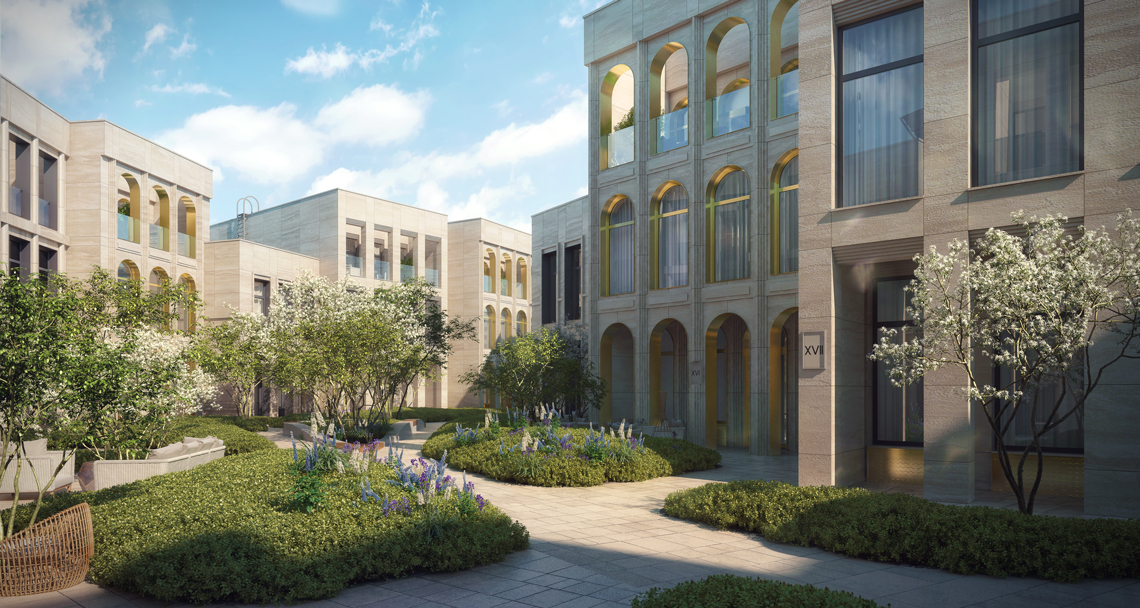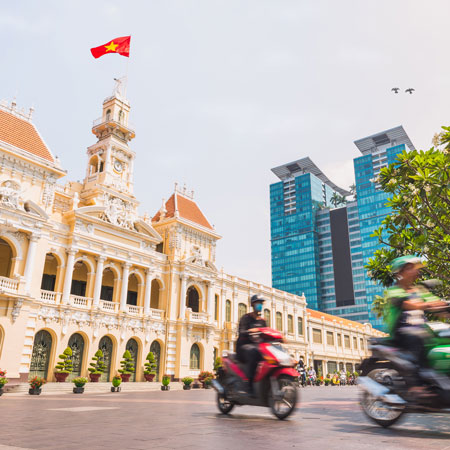The slowdown seen across the world’s leading prime residential markets continued during 2019. The outlook for 2020 is slightly improved. In 2019, capital value growth across 23 cities in the Savills World Cities Prime Residential Index remained flat, averaging 0.1%. Markets across the index are forecast to see capital value growth of 1.8%, on average, in 2020, better than the previous year but still well below peak increases of 9.3% in June 2013.
There are markets which continue to defy the trend: Lisbon, Sydney, and Moscow (above) are all projected to have growth greater than 6% in 2020. A combination of low interest rates and increased demand are driving the growth in these markets.
Prime residential capital value growth forecasts, 2020
Source: Savills Research
Europe
Still further potential for Berlin
Berlin was the strongest performer in capital value terms in 2019, recording growth of 8.8%. However, the outlook for 2020 remains uncertain due to the proposed introduction of a rental cap. This is causing uncertainty in the prime markets which, to date, had been seeing strong interest from end users and investors looking for income returns. If the proposed cap does not come into effect, prices are forecast to continue to rise, but at a lower rate: between 2% and 3.9% in 2020.
Moscow, Paris, Amsterdam and Lisbon going strong
Moscow is projected to see price increases of between 6% and 7.9% in 2020. Predominantly a domestic market (more than 97% of transactions are by Russians), growth is being driven by a recovering domestic economy and a developing mortgage market. Paris and Amsterdam have re-emerged as two of the most attractive investment environments in Europe. Prices are forecast to grow between 4% and 5.9% in 2020. The relatively safe nature of these markets and low to negative interest rates will also continue to drive investment.
Lisbon is also forecast to see growth of between 6% and 7.9% in 2020. This will continue to be driven by a general lack of supply compared with the level of demand within the city. There is still considerable investment by international buyers, though at lower levels than seen in previous years.
London has faced relatively high uncertainty in recent years, resulting in depressed prices for prime residential properties. Given the new Conservative majority in Westminster and lessening uncertainty around Brexit, there is the prospect for market recovery. Prime London prices are forecast to increase 2%, which is slightly weaker than previous cycles due to higher taxes and less favourable exchange rates for foreign buyers (see Savills Report: Annual Residential Property Forecasts).
Slowdown in Spanish and Swiss markets
Madrid and Barcelona are facing a slowdown of new developments due to a lack of available housing stock and greenfield land to develop. There is still active demand in prime residential real estate from both national and international buyers. The increasingly scarce supply in the prime markets is not leading to new upward pressure on sales prices, however, which are forecast to remain the same as their 2019 values. Another market with an above average proportion of foreign real estate owners, Geneva is forecast to remain stable or achieve marginal price growth of between 0% and 1.9% in 2020.
United States
Slowing, apart from San Francisco
Performance in the US’s most international cities – Los Angeles, Miami and New York – has been subdued as they contended with oversupply in their prime markets. New York, adjusting to higher mansion tax rates, saw prime sales slip in 2019. The slowdown is expected to continue into 2020, with price increases hovering around 1% and below, though high levels of inventory could pose a buying opportunity for some.
San Francisco, a perennial outlier in terms of high price performance, is forecast to continue its positive growth trend in 2020. Though capital value growth is predicted to only grow between 0% and 1.9%, these figures are stronger than other gateway markets in the US.
Asia-Pacific
The uncertainty in the Asia-Pacific prime residential markets is forecast to continue in 2020. Sydney is predicted to lead the region with more than 6% capital value growth in 2020. This growth is supported by lower interest rates, increasing immigration, and continued increases in demand. However, the market remains sensitive to global uncertainty and price rises could be reactive to any fluctuations in the market. The ongoing bush fires may be a near-term mitigating factor for the market as they start to impact on national GDP growth. This is not expected to weaken capital city price growth for middle- to upper-priced detached housing or market sentiment – however it will continue to impede growth in rural areas.
Singapore, Tokyo, and China produce steady progress
Singapore and Tokyo are proving to be stable markets in a region which seems beset by continuing uncertainty. Despite the demographic challenges facing Japanese markets, Tokyo consistently performs well economically. Within the residential market, the luxury segment continues to see growth. Demand for these properties has continued to strengthen, while supply has been slow to match demand. The prime sales market in Singapore had a strong 2019, benefiting from rising affluence among local residents and international buyer interest. Small price rises are expected for 2020.
Mainland Chinese cities are forecast to record positive growth in 2020, but at rates well below the double digit annual growth recorded between 2013 and 2017. While Beijing and Shenzhen are predicted to see modest growth, around 1%, prices in Shanghai are projected to be between 2% and 3.9%, while Guangzhou and Hangzhou are projected to grow upwards of between 4% and 5.9%. 2019 saw the continuation of the financial de-risking campaign that China has been waging for the past few years, which has resulted in an overabundance of caution in the markets.
Slowdowns in Hong Kong, Bangkok, and Kuala Lumpur
In Hong Kong, popular unrest and the US-China trade war will continue to take a toll on the prime residential market. For 2020, there is a predicted mild decrease for luxury residential prices. As of 15 December 2019, a tentative trade deal between the US and China was agreed which should lessen some of the strain on prime residential markets not only in Hong Kong but also in mainland China.
Bangkok and Kuala Lumpur have seen a downward price correction due to a loss of investor interest and market confidence. However, given that the prime residential sector is popular with senior expatriate residents, values are anticipated to remain steady or only have marginal declines in prices in 2020. Mumbai prime residential products have continued to experience weak demand and, as such, are forecast to see price declines of up to 1.9%.
Middle East and Africa
Price corrections and oversupply define region
In Dubai, oversupply is continuing to have a stifling effect on price growth, with 2020 values forecast to decline between 2% and 3.9% from 2019. A new government committee to monitor new supply will also help in regulating new launches throughout 2020 and could assist in reducing price declines across the city.
Cape Town has faced a slowdown in activity and a correction in prices, particularly at the top end of the market, which is expected to begin to stabilise in 2020. The combination of reduced foreign buying and increased emigration is resulting in oversupply weighing on prices.





